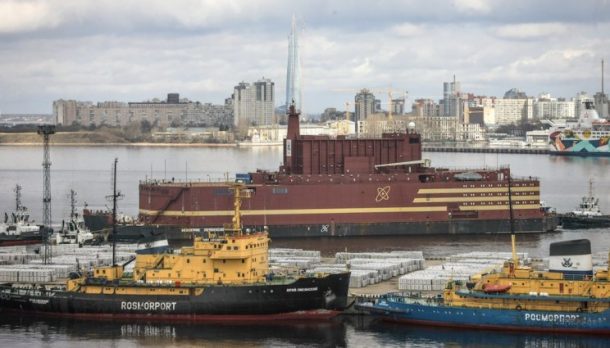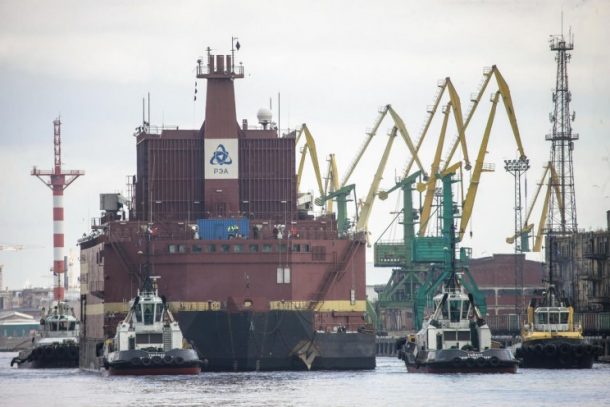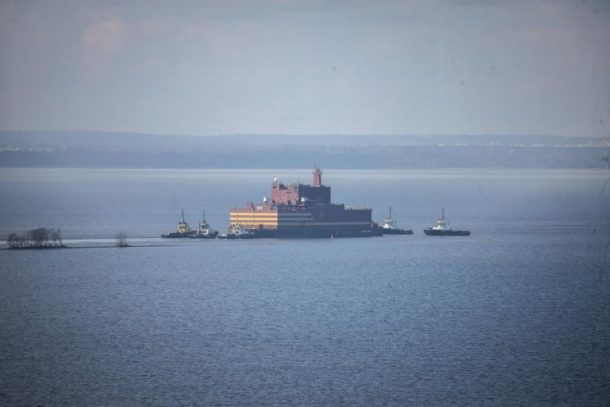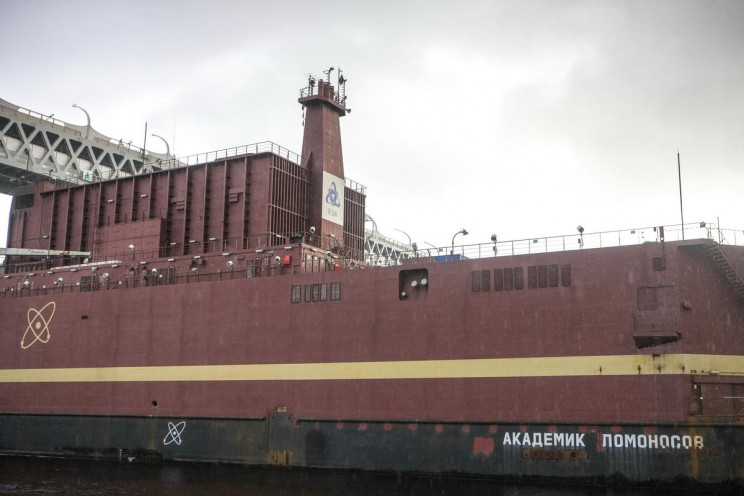Russia’s 70-megawatt Akademik Lomonosov is the world’s first floating nuclear power plant. It began its first trip from St. Petersburg on Saturday. The ship has been launched to provide energy to geographically challenging coastlines and is heading towards Murmansk, a city located at the end of a deep bay off the Barents Sea.
The floating nuclear power plant has a long journey ahead of it. If everything goes according to schedule, the ship will be towed around Norway, fuelled in Murmansk in 2019 and then sail to the Arctic to power the town of Pevek, a desalination plant and drilling rigs.

“To test a nuclear reactor in a densely populated area like the center of St. Petersburg is irresponsible to say the least,” said Jan Haverkamp, nuclear expert for Greenpeace Central and Eastern Europe. “Moving the testing of this ‘nuclear Titanic’ away from the public eye will not make it less so: Nuclear reactors bobbing around the Arctic Ocean will pose a shockingly obvious threat to a fragile environment which is already under enormous pressure from climate change.”

There are twin nuclear reactors on the ship that can power a city of 100,000 people. It is mainly intended to provide power for oil and gas exploration. According to Russian media sources, Rosatom is planning on mass producing its floating nuclear plants for potential markets in Africa, Latin America, and South East Asia.
“This hazardous venture is not just a threat to the Arctic, but, potentially, to other densely populated or vulnerable natural regions too,” said Haverkamp. “The floating nuclear power plants will typically be put to use near coastlines and shallow water. Contrary to claims regarding safety, the flat-bottomed hull and the floating nuclear power plant’s lack of self-propulsion makes it particularly vulnerable to tsunamis and cyclones.”



